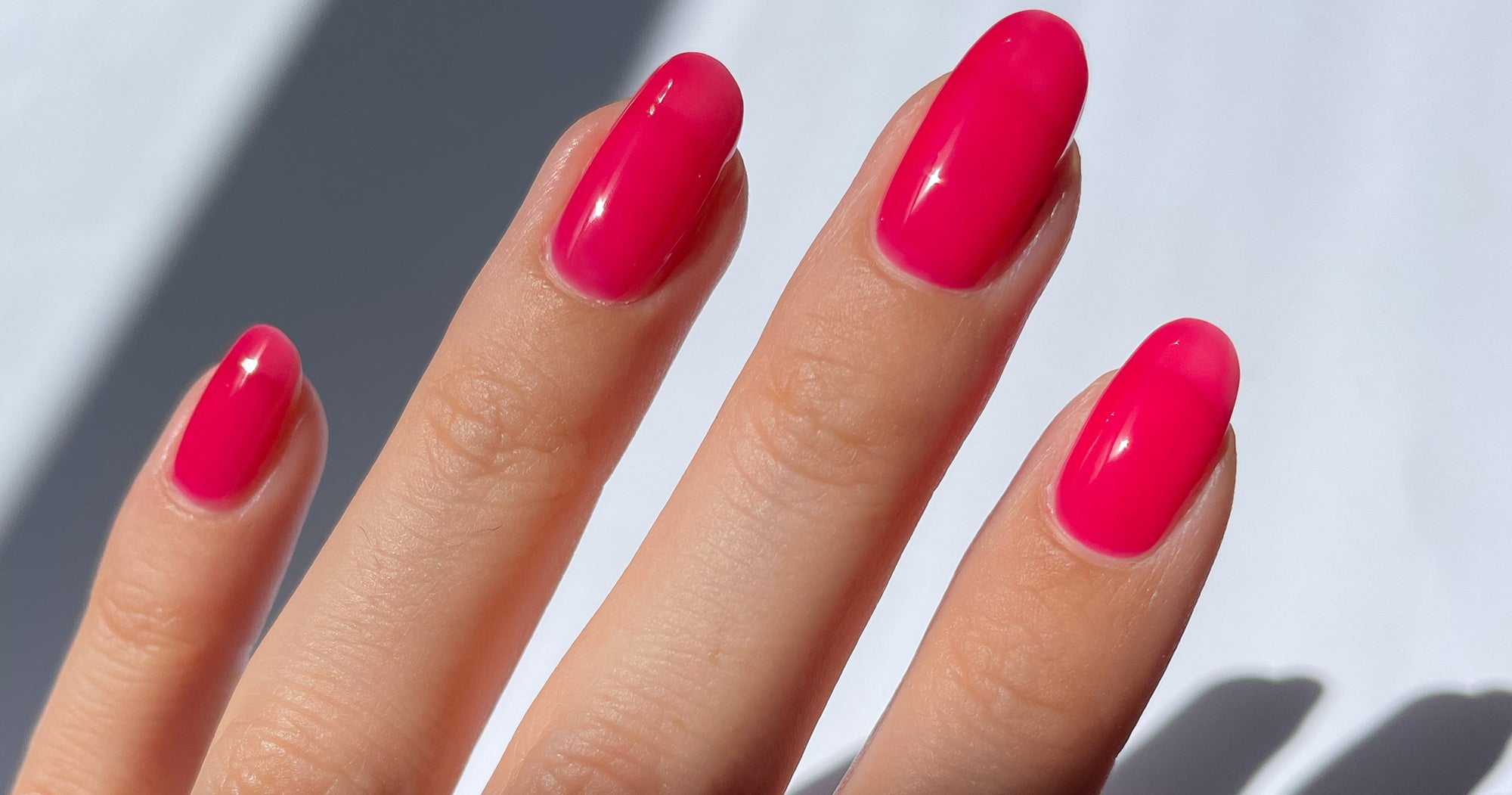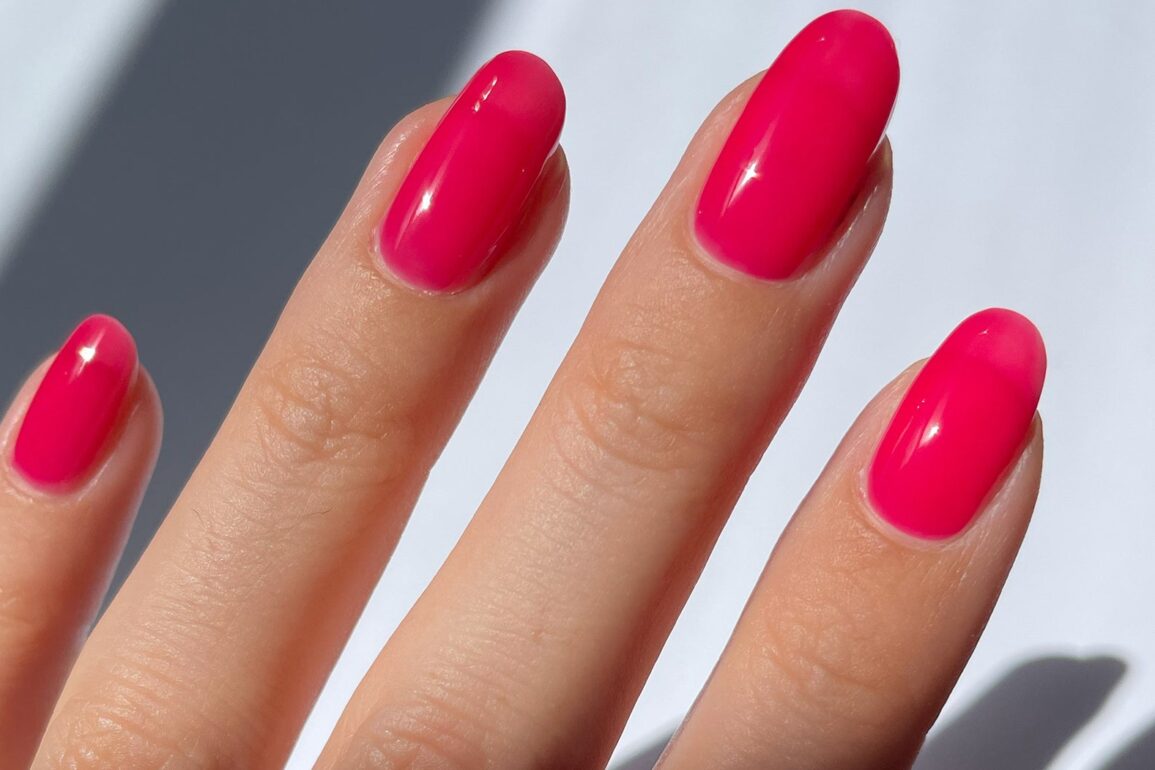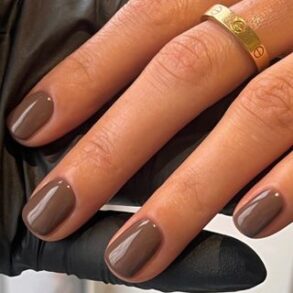
When nail content creator Sarah Haider (@heluviee) would get a manicure at her local nail salon, she’d always have to ‘fix’ it at home. “I always liked getting my nails done, trying out fun designs,” says Haider who now posts her DIY manicures on Instagram as nail inspo for her 582,000 Instagram followers. “But I would find myself coming home and immediately grabbing a nail file.”
It’s not that Haider’s formerly-routine salon manicures weren’t beautiful, it just seemed they weren’t turning out exactly how she wanted. “When a manicure doesn’t turn out the way I envision it, I get pretty frustrated,” Haider explains. Finding herself frequently anxious ahead of her salon appointment, Haider began doing her own nails. “I’d rather have them perfect,” she says.
What is nail anxiety?
Haider is not unique in experiencing nail-related anxieties. The #nailanxiety currently has 20.7K TikTok views and rising. Many people describe nail anxiety as a general uneasiness felt at the nail salon, sometimes manifesting in an inability to speak up when a part of the manicure — like the nail art or polish color — is not shaping up as expected. It can lead to a feeling of disappointment or regret. Of course, that’s just one side of it.
@taylormaeredfern #greenscreen thank god we got those fixed lol 😭💅🏼 #nailsalon #newnails #anxiety #nailanxiety #nailsalonanxiety #nailtok #nailtiktok #armygreennails #greennails #newnails ♬ original sound – Taylor Mae Redfern
Nail perfectionism
For Jess Brush, a nail creator who posts her art under the alias @nailbetch, visiting the nail salon causes a similar kind of self-imposed stress. As a self described “Type A” personality, Brush has a clear vision of what she wants for her nails, but struggles with how she’ll be perceived. “I never want to be pushy,” explains Brush. “But it gives me anxiety watching somebody else do my nails.”
Of course, that’s not to say that the nail salon is the problem — it’s definitely not. Anxiety is personal. But there may be a level of perfectionism at play. “I see this younger generation of people who are absolutely obsessive about their appearances, in a pretty extreme way,” offers Dana Stern, MD, an NYC-based dermatologist and nail specialist. “It seems largely driven by these edited images we’re seeing.” We know that the beauty industry sells an unrealistic standard of perfection — and the desire for “perfect” nails is a prime example.
Dr. Stern says that over the past few years she’s noticed an influx of patients hyper-focused on the appearance of their nails. “I’m thinking about a specific young, single female patient who is absolutely distressed by the appearance of her nails,” says Dr. Stern. “It’s almost paralytic. She’s very self-conscious about it, especially when she goes out on dates.”
Control behavior
Now, Brush’s DIY nail routine provides her a sense of control. “The core reason that I do my own nails is because I’m so controlling,” Brush admits. For nail artists and creators, anxiety as it relates to nails is not always negative. Some credit their anxiety for the level of detail they’re able to achieve with their nail art. “It can be a positive thing,” explains Haider. But when your nails are your job, it does add an extra layer of stress.
Even though Haider is in full control of her nails, she’s not rid of stress. In some ways, it’s worse. “I get panicky if a manicure doesn’t turn out perfect,” Haider explains of her own self-criticism. “I don’t want to say I spiral out of control, but I notice that I get really, really frustrated and it makes my hands shaky and it ends up taking much, much longer.”
Brush experiences nail frustration as well. “I get angry and anxious,” she explains, specifically when she “messes up” a manicure. “I have to fix it because if I don’t I’ll continue to stare at it and it will be something that constantly bothers me.” As Brush uses regular nail polish and not gel polish, fixing a smudge or a mess up is usually very simple. “I just wipe the polish off and start again.”
Salon anxiety
Where the nail salon is concerned, some people feel generalized anxiety about the process — specifically when sharp tools and cuticle cleanup is involved. “I remember the first time I went to the salon, the artist used a drill [also known as an e-file] to clean my cuticles,” says Abe, a nail content creator based in Brooklyn. “She used a drill on my natural nails and then when I took off the polish a few weeks later, I had a line of demarcation and I had to let that line, which was like carved into my nails, grow all the way out.”
While Abe doesn’t blame the nail salon, they now control the process by skipping any cuticle work. “Now I’m like, please don’t file or touch my cuticle — just paint, please,” says Abe. “That’s something I don’t think a lot of people realize, you can say no.” (We’ll get into some more helpful tips for relieving anxiety that relates to the salon experience later.)
Nail expression as “female-coded”
For Abe, a specific gendered form of nail anxiety has been baked into their lived experience, walking around the world as a man with “gorgeous, painted nails” and feeling judged for it. “I’ve experienced a lot of anxiety going into the nail salon, a traditionally-female-coded space,” explains Abe. Beyond the salon environment, the world isn’t always accepting of men wearing nail polish. “I work really hard not to put my hands in my pockets — but it’s instinctual because I’m scared of what people will say.”
Movement-restrictive anxiety
After gaining a significant following as a nail content creator sharing his nail art on Instagram, Abe began to experience a different form of relatable anxiety: What if I break a nail? “When I first started doing my nails, I grew my natural nails really long and I remember being scared to touch things,” Abe says. “With long nails, I found I moved about the world differently. I had to think about how to pick things up.”
Today Abe keeps their natural nails shorter to relieve that specific, movement-restrictive stress. “That was no way to live,” Abe adds. “I have shorter nails and I don’t worry about them as much.”
Nail biting & skin picking
Anxiety, stress, and worry can sometimes manifest in compulsive, habit-based nail issues, most commonly nail biting (onychophagia) and nail picking (onychotillomania). According to literature, nail biting alone affects 20 to 30% of the population. “When we’re talking specifically about anxiety, it can lead to a lot of bad [nail] habits,” explains Dr. Stern. The good news? Most habit-based nail behaviors are treatable. Sometimes regular salon manicures are actually a part of the treatment plan.
Haider recalls experiencing stress-induced nail picking when she was younger. “During undergrad, whenever I’d be nervous or anxious before exams, I had a really bad habit of peeling off the polish on my nails and picking at the skin around my nails,” says Haider. In these cases, routine manicures (whether at the salon or at home), can be really helpful. “Getting my nails done regularly actually helped a lot,” says Haider. “When I had a fresh set, it was harder to pick. When I had my cuticles cleaned up, there was nothing to pick at. I feel like that really alleviated the bad habit.”
Dr. Stern says this definitely works for a lot of people. “There is a cohort of people for whom manicures help them refrain from the habit,” offers Dr. Stern. “So one of the treatments for people who pick and bite can be getting regular manicures or gels. Also, the time and money invested in that process motivates them not to destroy what they paid for.” As we know, salon manicures are expensive.
Although nail biting and picking is not always linked to stress or anxiety. Dr. Stern explains that the opposite may be true: Sometimes people pick their nails when they’re bored. “I see that in a lot of my patients who need to be doing something and as soon as they stop, that’s when the need to be in motion continues and they choose to pick at their nails or bite their nails,” explains Dr. Stern. The treatment for nail picking or biting linked to inactivity might be to cover your fingernails during “high risk” times, in this case, when you might be bored. “I have some patients who have to put on cotton gloves when they watch TV or they’ll cover their nails with Band-Aids,” explains Dr. Stern.
Nail care as mindfulness practice
While our nails or a manicure can be a source of anxiety, it can also be a cure for it. For Abe, nail care prevents habit-based nail behaviors, like biting and picking. “I keep cuticle oil pens everywhere and use them when I have an urge to pick or bite and it helps me stop,” Abe explains. “If I can prevent a hangnail, I know I’m not going to be anxious about having my nails in the world.”
A practiced at-home nail routine is of huge help to Brush. “Having my nails done alleviates anxiety in a way,” explains Brush. “Taking time, making them the perfect shape, redoing one if it’s not right — it’s a soothing practice.” Abe experiences a similar sense of peace when painting their nails. “I’m able to turn my brain off because it’s a very repetitive task,” they explain. “Having that mindless task is really good for me and my mental health.”
Plus, Brush notes that putting time and effort into doing her own nails makes her feel confident. “I think it’s a huge boost in confidence,” Brush explains. “It’s like an accessory. If I’m wearing sweatpants and my hair isn’t done but my nails look hot, it just gives me a lot more confidence.”
Tips to relieve nail anxiety
Of course, not all of us are nail artists and painting your own nails or practicing routine nail care might not be a particularly soothing practice. If you want to go to the nail salon, but feel anxious before your manicure, know that you’re not alone (clearly). Remember that you can speak up and advocate for yourself — and it’s better to do it earlier in the service and of course, be polite.
“Speak up in a really polite way,” offers Brush. “As long as you speak up in a polite manner and you’re conscious about how you’re talking, I think most artists would be like, ‘oh, of course I’ll fix it right now.’ They don’t want you to leave unhappy.” If you’re getting a gel manicure, try to check that you like your nail shape and polish color before the polish is cured, otherwise it’s trickier to fix. “Before your artist tells you to put your hand [under the light], you can take a look at your nails,” offers Haider. “At that point, it’s so easy to wipe off the polish. That would be the best time to say you’re not a fan of the color versus after curing it. Once it’s cured, she has to file them all down.”
Luckily, even with perfectionism and nail anxiety on the rise, there’s lighthearted nail content, too. “Recently I’ve been posting more ‘nail fails,'” says Abe. “We see a lot of these highly-polished videos that make it look so easy — because it’s a two second video that took an artist two hours to do — but I like showing the fuck ups. I show that I get polish over my skin and then I show how to fix it.” We all make mistakes, even people with seemingly perfect nails. According to Abe, it’s just fingernails: “Really, no one looks at your nails that closely.”
This post was originally published on this site be sure to check out more of their content.







